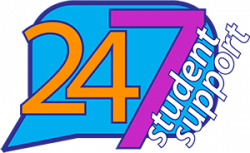Hello, and welcome back to our asynchronous workshop series: How to Design a Successful Innovation Grant.
The series began in September, and it will end in March 2022, the same month Innovation Grant proposals are due to the Virginia Western Educational Foundation.
Hopefully this approach will help you slowly explore your ideas — on your own time, at your convenience — as you continue to juggle your regular to-do list.
Let’s review some of our Lab Lessons so far, including:
#1: Grant proposals are not time wasted … even if you FAIL
#2: Know the rules of the game
#3: Focus on NEEDS first, solutions second

Let’s move on to Lab Lesson #4: When you have a grant application in front of you, where do you even start? You begin with the budget.
Yes, the money. This is where your plan gets very real. And the budget tells the story.
If you’ve been following each step in this series, you also know there are some specific rules about the budget.
So let’s go back to the 2020-21 Innovation Grant grant application, which notes:
(1) Total requests will be considered up to $10,000. This is the maximum, but rarely are projects awarded the full amount. The key is that you ask for what you need — nothing more, nothing less. This is a balancing act, as you don’t want to pad your budget … but you also don’t want to starve your project of resources in an effort to look more competitive. Think Goldilocks: Jusssssst right.
(2) Unallowable costs:
- Funds may NOT be used for services or materials normally provided by the departmental offices (copies, printing, etc.).
- Funds may not be used to cover student worker labor or student travel requests.
- Limited funds are available for food/hospitality.
So now that you know what’s NOT allowed, what is OK?
For ideas, we will review the budget worksheet, which is the last page of the grant application. The budget categories include:
- Equipment
- Software
- Certifications or training
- Release time
- Conference registration / travel
- Miscellaneous
So this is where you’re going to have to get specific with your numbers, and this will involve some research.
When it comes to the budget, I like to think of grant projects as mountain expeditions. For successful hikes, especially in unfamiliar areas, you usually plan ahead. You think through the details.
Same thing with the budget. You can’t just use general, ballpark guess-timates.
You will need to base your budget on actual quotes and prices.
And believe me — you will thank yourself later when your grant is funded. You already did the hard work of checking prices and creating the most accurate budget possible early in the process. You will want to save your documentation and “show your math” — so you don’t have a puzzle to figure out months later. Speaking from experience … lol.
So, what might this budgeting process look like?
Let’s say you want to organize some professional development on campus. In early 2020, I submitted my own Innovation Grant proposal, which was to bring an improv workshop to January in-service. In order to complete the grant application, I reached out to the workshop provider, explained my idea, and came to an agreement on the price for a 2-hour workshop. This was my entire grant budget ($500).
If you want to attend a conference, you will need to track down the registration fee and calculate travel costs, using federal per diem rates, which cover your daily food and incidental costs.
If you are a faculty member requesting release time, you will need to (1) get the green light from your dean and (2) work with Sarah Miller in Human Resources to compute the correct credit rate.
If you want to purchase software or hardware, check with Information & Educational Technologies (IET) for vendors, estimates, and any support needs.
And if you order equipment, don’t forget to factor in “extra” costs such as shipping or warranties.
This list is by no means comprehensive, but it’s a good starting point for the most common project requests.
And remember: The more specific your budget, the better. Just like good writing.
And also like good writing, think of your budget like a final draft. If you receive an award, you should have *some* wiggle room for future adjustments, but the key is that you communicate any changes with the funder well in advance.
So what’s next?
The series will return right after Thanksgiving — Dec. 1 — with the next segment, which will focus on collaborating for project success.
Let’s look at the path ahead:
| December | Collaboration: Who will you connect with to make this successful? |
| January | Outcomes: What does this change look like if you’re successful? |
| February | Sustainability: Why would this grant be a good investment? |
| March | Finish line: Proposal ready to submit! Huzzah! |
Until then, here’s your homework checklist to help stay on track:
By the end of November:
- Catch up on previous homework assignments from September and October
- Sketch out a budget. What resources do you need to be successful? Use the budget worksheet in the grant application to get started.
- Chat about your idea with your dean or supervisor. Ask them: Are there funds already available for your idea (i.e., do you even need a grant)? Will this project be sustainable beyond this grant?
- Contact your department’s lead purchaser for guidance, or any other department around VWCC that might be impacted. Example: If software/technology is involved, then IET.
- If you plan to request release time/special assignments, contact Sarah Miller in Human Resources to help compute the correct rate. Note the HR signature required on the budget worksheet.
Please contact Carolyn Payne in the VWCC Educational Foundation for any questions about the Innovation Grant program.
You can do this!






 Shelley Lyons is glad to be back on campus as she is a Virginia Western alum, and has served as the Administrative Officer for Grants Administration at Virginia Western since early 2022. Prior to VWCC, her career focus was within the Human Services and Arts fields. She wrote her first grant in 1996 on a whim and has continued to plan and learn since that time. She most enjoys seeing a well-planned project come to fruition, where funder, project manager and beneficiaries can all feel success and see impact.
Shelley Lyons is glad to be back on campus as she is a Virginia Western alum, and has served as the Administrative Officer for Grants Administration at Virginia Western since early 2022. Prior to VWCC, her career focus was within the Human Services and Arts fields. She wrote her first grant in 1996 on a whim and has continued to plan and learn since that time. She most enjoys seeing a well-planned project come to fruition, where funder, project manager and beneficiaries can all feel success and see impact.